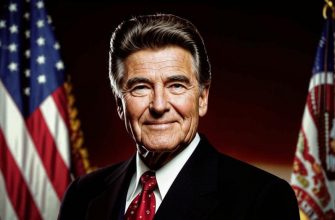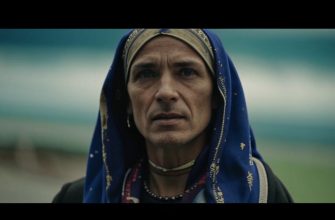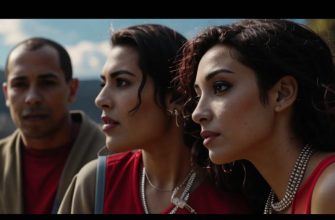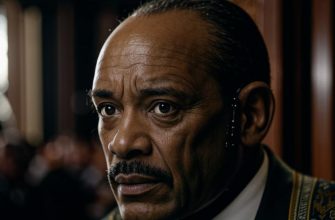The Dust Bowl was a period of severe dust storms that greatly damaged the ecology and agriculture of the American and Canadian prairies during the 1930s; severe drought and a failure to apply dryland farming methods to prevent the aeolian processes (wind erosion) caused the phenomenon. This era inspired a number of films that meticulously portray the tough living conditions, unprecedented struggle for survival, human endurance and the great American spirit. These films not only serve as a reminder of the resilience of the human spirit but also portray the often grim realities of life during this environmental crisis.
“Bound for Glory”, 1976
Director: Hal Ashby

It is a biopic about folk musician Woody Guthrie, whose songs are considered to have captured the plight of the working-class people during the Dust Bowl era.
Starring: David Carradine, Ronny Cox, Melinda Dillon, Gail Strickland, John Lehne, Ji-Tu Cumbuka, Randy Quaid, Elizabeth Macey, Susan Vaill, Sarah Vaill;
Production year: 1976;
Genre: biography, music, drama;
MPAA rating: pg;
Duration: 147 min.;
Rating: IMDB: 7,2;
More information about the film “Bound for Glory” on the website imdb.com
“Carny”, 2009
Director: Sheldon Wilson

Although the setting fluctuates, part of this film showcases life in the Dust Bowl era. The film revolves around a traveling carnival during the Great Depression.
Starring: Lou Diamond Phillips, A.C. Peterson, Vlasta Vrana, Dominic Cuzzocrea, Simone-Elise Girard, Dan Petronijevic, Joe Cobden, Felicia Shulman, Matt Murray, Kyle Gatehouse;
Production year: 2009;
Genre: horror, science fiction, fantasy, action, thriller;
Age: 16+;
Duration: 85 min.;
Rating: IMDB: 4,2;
More information about the film “Carny” on the website imdb.com
“The Dust Bowl”, 2012
Director: Ken Burns
This Ken Burns' documentary consists of two parts: “The Great Plow Up” and “Reaping the Whirlwind”. The two films meticulously detail the Dust Bowl's devastating impact through interviews, photos, and footage.
Starring: Dorothy Williamson, Donald Worster, Timothy Egan, Pamela Riney-Kehrberg, Calvin Crabill, Imogene Glover, Wayne Lewis, Robert McCoy, Charles Shaw, R. Douglas Hurt;
Production year: 2012;
Genre: documentary, history;
Rating: IMDB: 8,2;
“Interstellar”, 2014
Director: Christopher Nolan

While not directly about the Dust Bowl, this Christopher Nolan film portrays Earth in the near future where Dust Bowl-like conditions have led to humanity searching for a new planet to inhabit.
Starring: Matthew McConaughey, Anne Hathaway, Jessica Chastain, Mackenzie Foy, Michael Caine, David Gyasi, Wes Bentley, Casey Affleck, John Lithgow, Matt Damon;
Production year: 2014;
Genre: science fiction, drama, adventure;
MPAA rating: pg13;
Duration: 169 min.;
Rating: IMDB: 8,7;
More information about the film “Interstellar” on the website imdb.com
“Oklahoma Crude”, 1973
Director: Stanley Kramer

While not solely about the Dust Bowl, this film is set during the Great Depression and includes imagery and plot elements that resonate with this era.
Starring: George C. Scott, Faye Dunaway, John Mills, Jack Palance, William Lucking, Harvey Jason, Ted Gehring, Cliff Osmond, Rafael Campos, Woodrow Parfrey;
Production year: 1973;
Genre: drama, comedy, western;
MPAA rating: pg;
Duration: 108 min.;
Rating: IMDB: 6,3;
More information about the film “Oklahoma Crude” on the website imdb.com
The plight, determination, and grit of the people while combating the Dust Bowl serve as a backdrop in all these films, providing a stark reminder of nature's wrath and human resilience.
In conclusion, films about the Dust Bowl serve not only as poignant historical recollections but also as profound artistic expressions of human resilience, adaptation, and survival in the face of environmental catastrophe. Through the lens of cinema, audiences are transported to the gritty reality of the 1930s American Great Plains, witnessing the profound economic, social, and ecological turmoil that shaped the lives of millions. These films do more than just recount the events of the Dust Bowl; they explore the enduring spirit of those who endured it, offering reflections on human vulnerability and the indomitable will to persevere. They are compelling reminders of the past, cautionary tales for the present, and perhaps, most importantly, an inspiration for the future as we collectively face the ongoing challenges of climate change and environmental stewardship. Through their narratives, they preserve the legacy of the Dust Bowl, ensuring that the lessons gleaned from this pivotal period in history remain relevant and resonant.









